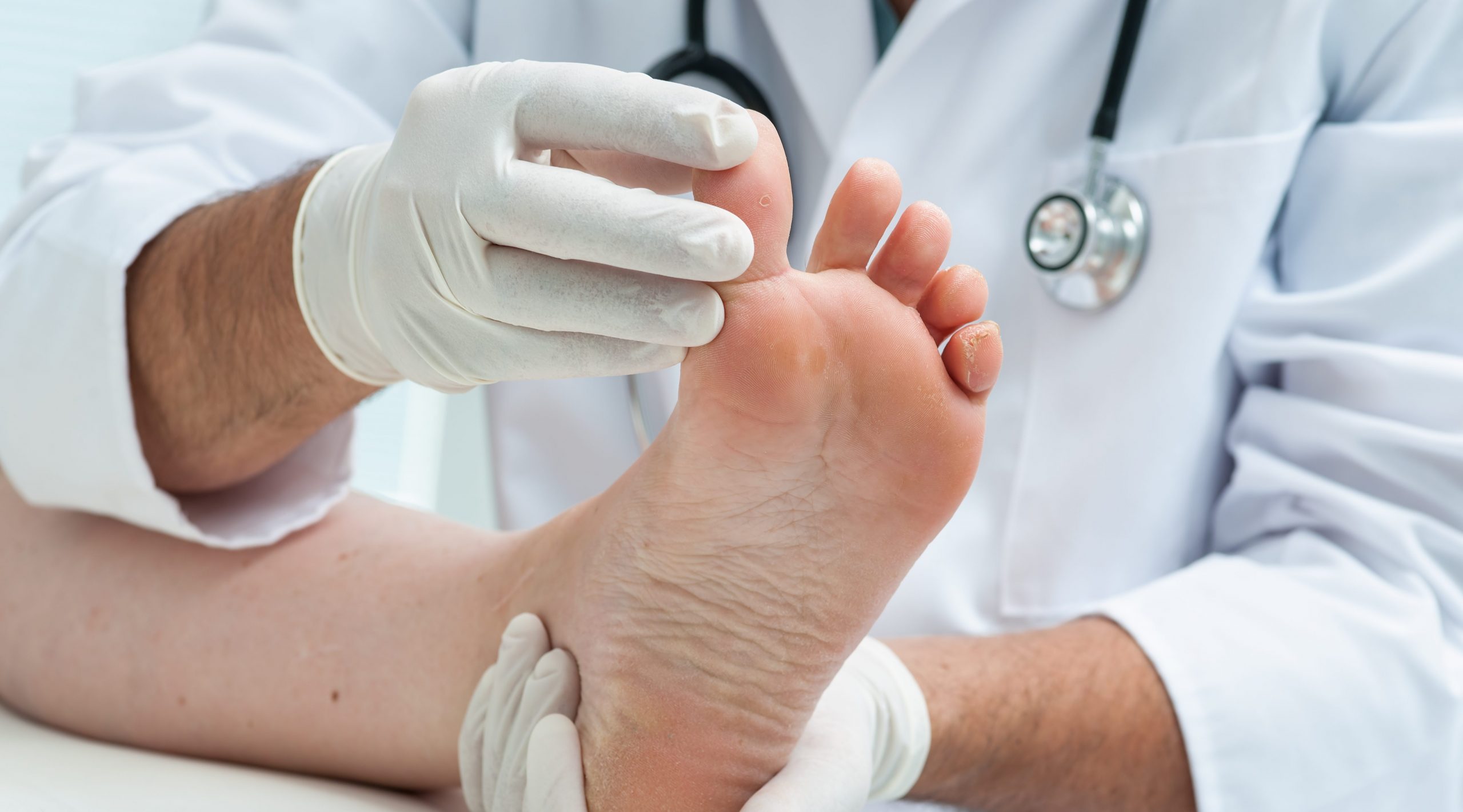
Athlete’s foot is a dermatological condition that affects the skin of the feet and can also spread to the toenails. This infection flourishes in warm and humid, which is why it’s often contracted in places like swimming pools and changing, hence its name. Keep reading to learn how to recognize and treat athlete’s foot effectively.
What is the athlete’s foot?
Tinea pedis, commonly known as athlete’s foot, is a fungal infection that affects the skin of the feet. It causes itching and peeling, particularly between the toes, but it can also affect other areas of the foot. While rarely serious, tinea pedis can pose a risk to those with a weakened immune system, making prompt treatment essential. People with diabetes are particularly vulnerable to complications, as the fungus can create openings in the skin that can become infected with bacteria. The athlete’s foot can also spread to the hands and other parts of the body through contact with contaminated surfaces or materials. Therefore, it is essential to limit its spread by taking proper precautions.
How common is athlete’s foot?
Athlete’s foot, which does not only affect athletes, is a very common fungal infection that can affect all age groups.
Is the athlete’s foot contagious?
Athlete’s foot is a highly infectious dermatological ailment that can be transmitted through contact with contaminated skin or surfaces.
The athlete’s foot causes
The fungus responsible for causing athlete’s foot sustains itself by consuming protein in skin and nails and thrives in damp environments. Consequently, individuals with hyperhidrosis (excessive sweating of the feet) are at greater risk of developing the condition. The risk of infection also increases when feet are enclosed in socks for prolonged periods or when socks remain moist. Walking barefoot in a communal shower or bathing area is another factor that heightens the chances of contracting the infection. Lastly, coming into contact with an individual’s skin with athlete’s foot or surfaces and fabrics they use increases the risk of infection.
Who’s most at risk?
To summarize, individuals who experience hyperhidrosis or frequently walk barefoot in moist communal areas are at the highest risk of contracting athlete’s foot.
Symptoms of athlete’s foot
The fungus between the toes and on the foot occasionally switches between periods of activity and dormancy. When active, typical symptoms of athlete’s foot include itching, redness, and peeling of the skin. The skin between the toes and on the soles of the feet is typically thicker, and in advanced stages, blisters may appear, accompanied by an unpleasant odor. The condition may also impact the nails, causing them to thicken, crack, change color, or detach from the nail bed.
Diagnosing athlete’s foot
In most cases, a visual examination by a chiropodist or podiatrist is enough to diagnose athlete’s foot. However, if the foot specialist is uncertain about the underlying cause of the visible symptoms, they may collect a sample for analysis. This involves scraping the surface of the affected skin or nail to identify the most effective treatment.
How to get rid of athlete’s foot: common treatments
Typically, antifungal creams or oral medications are typically used to treat athlete’s foot. In cases where pain is present, the chiropodist or podiatrist may recommend pain-relieving creams. Antibiotics may be necessary if a bacterial infection develops. If the condition infects the nail, the chiropodist or podiatrist may recommend a medicated nail lacquer such as Jublia, laser or surgery to eliminate the fungus. While these treatments effectively resolve athlete’s foot, it is important to note that the condition may reoccur.
Recovery time
When complying with the health professional’s prescription, those affected experience a healing time of anywhere from two weeks to one month.
Treatment contradictions
To prevent potential drug interactions, it is advisable to inform the healthcare provider of any medications taken regularly. It is also important to disclose any allergies to chemical components that may be present in specific treatments.
How to prevent athlete’s foot
Maintaining clean and dry feet is the best way to prevent athlete’s foot. Washing your feet daily with soap while showering will disinfect them, and it is crucial to dry them thoroughly before wearing clean socks. It may seem obvious, but avoiding borrowing or lending socks or shoes is also an effective way to protect yourself against infection. When visiting public places for sports or relaxation, it is advisable to wear sandals to keep your feet safe, particularly if they have lesions that make them more susceptible to infection. Lastly, it is recommended to wear breathable footwear to ensure that sweat is adequately ventilated. Alternating between several pairs of shoes allows them to dry, thus minimizing the risk of fungus growth. For individuals with hyperhidrosis, absorbent powders that reduce sweat and moisture in socks and shoes can be considered.
Consult a chiropodist to maintain healthy feet
Redness and itching, common symptoms of athlete’s foot, can also be symptoms of other foot conditions. A foot assessment can be a valuable solution to ensure the health of your feet and prevent complications. This examination may not only reveal dermatological or biomechanical problems but can also help to identify underlying causes of certain conditions. Contact the FootNetwork clinic nearest you for advice on maintaining healthy feet.

